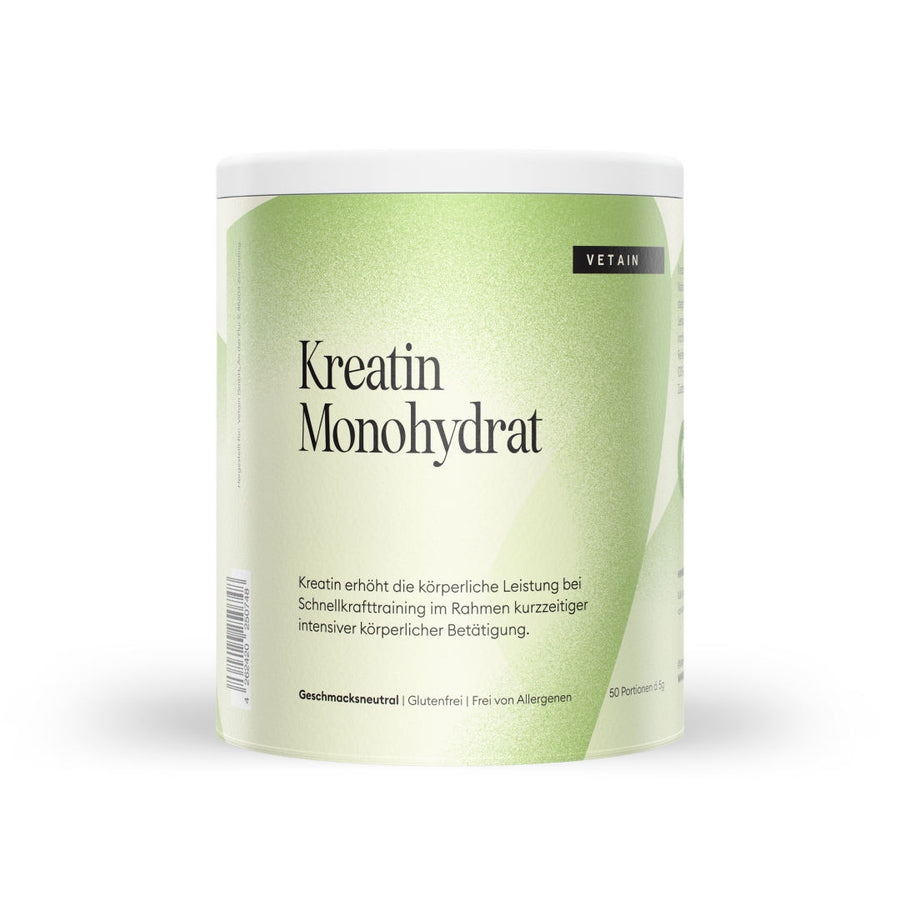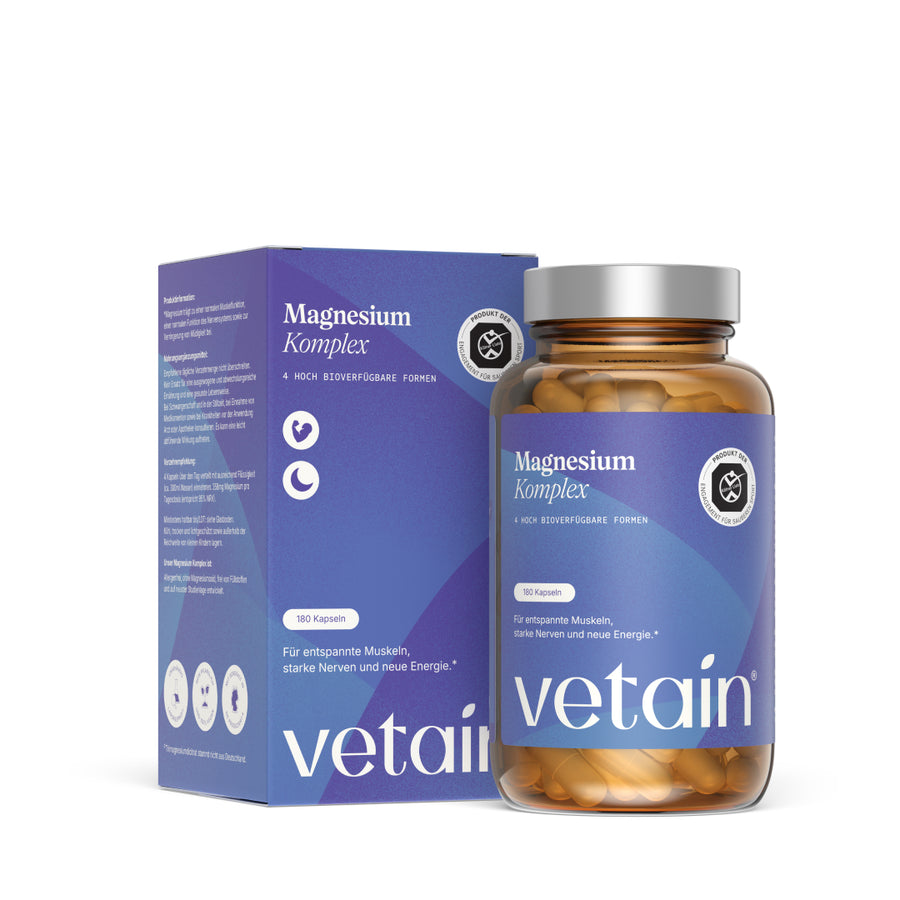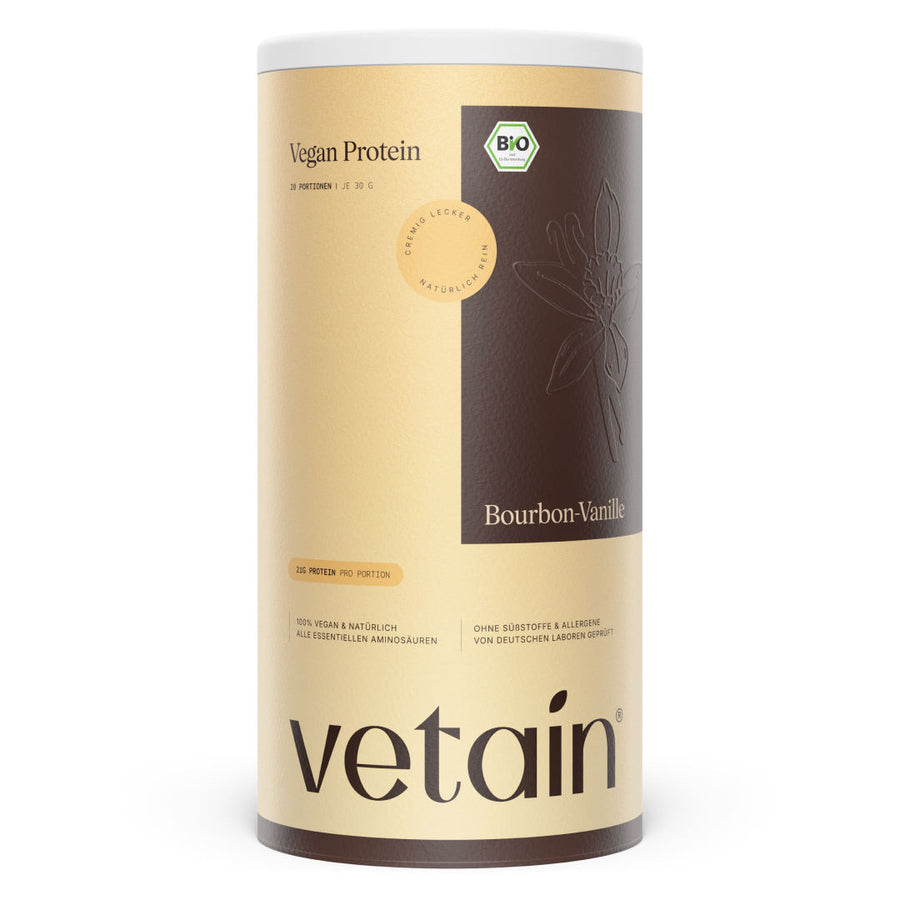Creatine is one of the most researched dietary supplements – and for good reason. For fitness enthusiasts, it’s almost a must, but even as a beginner you should look into this substance and consider integrating it into your routine. Why? Because there are hardly any significant downsides, and it’s used by many athletes. Read here everything about creatine intake – and what else you should know about it.
First things first: What is Creatine?
Creatine is a dietary supplement, but a completely natural one – it even occurs naturally in the body without additional intake. It plays an important role in the energy supply of the muscles and is naturally present there – especially during short, intense efforts such as strength training or sprinting. You can learn more about what creatine actually is in our article "What is Creatine?"
For athletes and active people, the correct intake of creatine is interesting because it is stored in muscle cells. Whether you want to become stronger, faster, or improve endurance: many athletes use creatine as a supplement to their training.
If you’re interested in using creatine, I recommend our article "What does Creatine do?". There we take a closer look at it!
First Tips for Taking Creatine
One of the most common questions: how should you take creatine – as capsules or powder? Both versions have their pros and cons – surprise – and as so often, there is no right or wrong. It’s best to try both and then choose what fits your lifestyle.
Taking Creatine Powder
Powder form is the most popular among athletes because it’s flexible and more affordable. You can mix it into water, juice, or a protein shake. You can also use it in smoothies, pancakes or chia pudding – the possibilities are endless. Just make sure the powder dissolves completely to make absorption easier. Especially in water or juice, clumps can be unpleasant. A practical option is to combine creatine with a carbohydrate-rich drink right after training.
%-split_content-%
Taking Creatine Capsules
Capsules are a convenient alternative, especially if you’re often on the go and don’t want to mess around with powder or dislike its taste. They’re easy to dose and require no preparation.
No matter which form of creatine intake you choose: always make sure to drink enough water! Creatine intake is associated with water retention in the muscles, which increases your body’s water needs.
Creatine Intake and Dosage
When and how have been clarified – but how much creatine should you take? The optimal creatine dosage depends on your goals and individual conditions. In general, a daily amount of 3 to 5 grams of creatine monohydrate is recommended.
If you’re in a hurry, a loading phase is often recommended. If you want to try this, you can take 15 to 20 grams of creatine daily, split into several servings, for five to seven days. Afterwards, the standard dose of 3 to 5 grams per day is sufficient to maintain your stores.
What’s important is taking it regularly (daily!). Studies show that moderate dosages are considered safe by professionals – excessive amounts provide no additional benefit and are simply a waste of money.
And what about rest days?
You should also take creatine on rest days. The reason: creatine is stored in the muscles and builds up over time, so regular intake is necessary.
When to Take Creatine
Studies show that taking creatine after training with a meal or shake can be practical. Taking creatine on an empty stomach is also possible but can cause stomach discomfort in some people. In the end, the time of day doesn’t matter much – morning, noon, or evening: all are fine.
Find more tips on creatine timing here!
Continuous Use – or Breaks?
Some wonder if long-term use is really useful. Basically, there are two strategies: you can use creatine as a short-term cycle, or as continuous supplementation. In a cycle, you take creatine for several weeks and then take a break. With continuous use, you take it daily without breaks.
Scientific studies have shown that moderate amounts are safe for healthy individuals.
If you forget to take it once in a while, don’t worry. Just take your normal dose the next day!
It’s like diets: eating one salad won’t make you slim, and eating more cake on your birthday won’t make you overweight. Consistency is the key.
What is a “Creatine Cycle”?
A typical creatine cycle consists of a loading phase of 5 to 7 days with 15–20 grams per day, followed by a maintenance phase of 3–5 grams daily. Such a cycle can last 6–8 weeks. Many athletes then take a break for a few weeks before starting again.
What Happens if You Stop Taking Creatine?
If you stop taking creatine, your muscle stores will return to baseline within about four weeks. For many, this can feel like an adjustment. Pay attention to how you feel during this time.
Women, Men, Pregnancy: Final Notes on Creatine Intake
Depending on your age or life stage, you may wonder whether you should take creatine at all.
… Creatine intake for women and men: Ladies, you can take it just as well as men.
… Creatine intake without exercise: Without training, creatine is less effective, as it is mainly stored in connection with muscle activity.
… and at what age can you start taking creatine? For young athletes under 18, creatine is usually not recommended, as its effectiveness and safety in this age group are not yet sufficiently studied. Therefore, we cannot recommend creatine intake for them.
Want more? Check out our blog – from training tips to delicious fitness recipes, you’ll find plenty to satisfy your curiosity. And of course, we don’t just provide you with the best creatine but also with many other minerals and the tastiest vegan protein powders we know!
%-product_content-%















 7 Min
7 Min
 Zuletzt aktualisiert am 30.10.2025
Zuletzt aktualisiert am 30.10.2025




